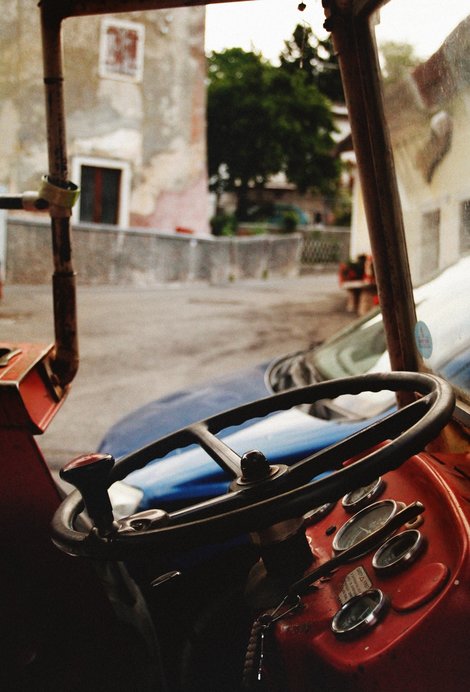Agriculture 4.0 is a smart farming concept where farm holdings are turned into intelligent webs of connected agricultural equipment, including mobile and non-mobile machinery (e.g. tractors and combine harvesters), and implements (slurry and fertilizers sprayers, ploughs, etc.).
According to representatives from the machinery industry, more than 70% of new farming equipment sold is fitted with some components of precision farming technologies. However, the uptake of Agriculture 4.0 business models conflicts with the fact that most agricultural machines in use in Europe are from older generations: for example, in 2012, the mean age of the 1.2 million licensed German tractors was 27.5 years.
This stems from the longevity and high purchase cost of agricultural machine. The cost of a new tractor ranges from 50,000 to 150,000 euros, while that of specialized equipment such as combine harvesters may be two to three times higher. This lowers the incentives for farmers to invest in the last cutting-edge, digital-enabled machinery.
Consequently, there is an increasingly strong business-case for implements that retrofit analogue machinery to connect to the smart farming ecosystem. In a policy paper published earlier this year, 365FarmNet, a provider of software solutions for intelligent farm management, gave an overview as to how old and analogue agricultural machinery could be partially digitized.
For 365FarmNet, the technologies enabling the conversion of conventional agricultural machinery into digitized ones are made up of several building blocks. These technologies have the benefit of running in areas not covered by adequate telecommunication networks: they can be implemented in field zones without mobile phone signals.
 First, farmers can easily digitize old analogue mobile machinery such as tractors, combine harvesters or ploughs by fitting them with Bluetooth beacons connected to data-processing devices such as smartphones, tablets or computers. In this way, even old analogue machinery can be tracked and integrated in cloud-based farm management systems. Examples of Bluetooth beacons include the 365ActiveBox, a beacon paired with a smartphone which can be fitted anywhere on a mobile analogue farming machine.
First, farmers can easily digitize old analogue mobile machinery such as tractors, combine harvesters or ploughs by fitting them with Bluetooth beacons connected to data-processing devices such as smartphones, tablets or computers. In this way, even old analogue machinery can be tracked and integrated in cloud-based farm management systems. Examples of Bluetooth beacons include the 365ActiveBox, a beacon paired with a smartphone which can be fitted anywhere on a mobile analogue farming machine.
A similar, although more expensive way of tracking and connecting agricultural machinery relies on Global Navigation Satellite Systems (GNSS), a technology using satellites to provide geo-spatial localization. GNSS technologies also form the backbone of controlled traffic farming, whereby farmers drive agricultural machinery on so-called “tram lines”, with increased efficiency in farm activities such as seeding, fertilization, weeding or pesticides spreading.
Lastly, several types of livestock farming machinery like automated feeding machines can be retrofitted with electronic tags connected through radio-frequency identification (RFID) systems.
Partial digitization is the most straightforward way to press ahead with Agriculture 4.0, while keeping old farming equipment in use. Click here to access the 365FarmNet white paper on Agriculture 4.0.